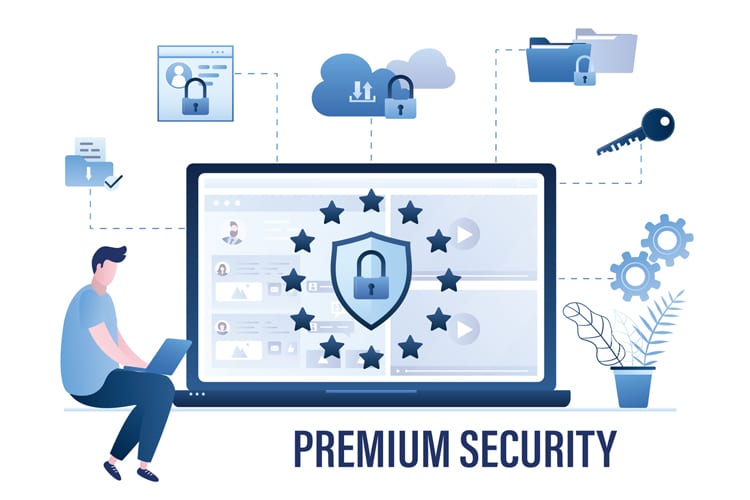Website Compromises can lead to data breaches, financial losses, reputation damage, and legal consequences. They are lucrative targets for threat actors. This article explores how threat actors gain website compromises, their motivations, and what you can do to protect your site against such attacks.

How Threat Actors Gain Website Compromises
1. Exploiting Vulnerabilities in Software:
– Unpatched Software: Threat actors often exploit known vulnerabilities in outdated or unpatched software, including content management systems (CMS), plugins, and server software.
– Zero-Day Exploits: These are attacks on vulnerabilities that are not yet known to the software vendor. These can be particularly dangerous as no patch is available to fix the issue.
2. Injection Attacks:
– SQL Injection: Attackers insert malicious SQL queries into input fields (like search boxes or login forms) to gain unauthorized access to the database.
– Cross-Site Scripting (XSS): Malicious scripts are injected into trusted websites, which can then execute when a user visits the site, potentially stealing cookies, session tokens, or other sensitive information.
3. Malware Infections:
– Drive-By Downloads: Visitors unknowingly download malicious software just by visiting a compromised website.
– Defacements and Redirects: Attackers modify website content or redirect users to malicious sites, often to distribute malware or conduct phishing attacks.
4. Brute Force Attacks:
– Password Cracking: Using automated tools, attackers attempt to guess passwords through numerous attempts. Weak or default passwords are especially vulnerable.
5. Phishing and Social Engineering:
– Credential Harvesting: Attackers use phishing tactics to trick website administrators into revealing their login credentials, which are then used to gain access to the site.
6. Backdoors and Web Shells:
– Persistent Access: Once a site is compromised, attackers may install backdoors or web shells that allow them to maintain access and control over the site even if the initial vulnerability is patched.
Motivations Behind Website Compromises
– Financial Gain: Stealing sensitive data (e.g., credit card information, personal identification) that can be sold or used for fraudulent activities.
– Data Breaches: Gaining access to proprietary information, trade secrets, or customer data for exploitation or sale.
– Reputation Damage: Defacing websites or leaking sensitive information to tarnish the reputation of an individual or organization.
– Political or Ideological Reasons: Hacktivists may attack websites to promote their political or social agendas.
– Resource Exploitation: Using compromised sites for cryptocurrency mining, botnets, or to launch further attacks.
How to Protect Your Business from Website Compromises
1. Keep Software Updated:
– Regularly update your CMS, plugins, themes, and server software to patch known vulnerabilities.
2. Use Strong, Unique Passwords:
– Implement strong password policies and encourage the use of unique, complex passwords. Use password managers to store and manage passwords securely.
3. Implement Security Plugins and Tools:
– Utilize security plugins that offer features like firewall protection, malware scanning, and brute force attack prevention to guard against website compromises.
4. Secure User Input:
– Use parameterized queries to prevent SQL injection and sanitize user inputs to mitigate XSS attacks.
5. Enable HTTPS:
– Ensure your website uses HTTPS to encrypt data transmitted between the user’s browser and your server, protecting sensitive information from interception.
6. Regular Backups:
– Perform regular backups of your website and databases. Store backups in multiple locations, ensuring they can be restored in case of an attack.
7. Monitor and Audit:
– Regularly monitor your website for suspicious activity and perform security audits to identify and address website compromises.
8. Limit Access:
– Grant administrative access only to those who need it and use role-based access control (RBAC) to limit permissions. Consider multi-factor authentication (MFA) for an additional layer of security.
9. Web Application Firewall (WAF):
– Deploy a WAF to filter and monitor HTTP traffic between the web application and the Internet, blocking potential attacks.
10. Educate and Train:
– Educate yourself and your team about the latest security threats and best practices. Regular training can help prevent successful phishing and social engineering attacks.
Website security is a critical aspect of maintaining a safe and trustworthy online presence. By understanding how threat actors perform website compromises, you can take proactive measures to secure your site, you can significantly reduce the risk of attacks.
Implementing robust security practices, staying informed about emerging threats, and regularly updating and monitoring your website are essential steps in safeguarding your digital assets and ensuring the integrity and reliability of your online presence.

Chris Montgomery
ThrottleNet Sales Director
[email protected]



